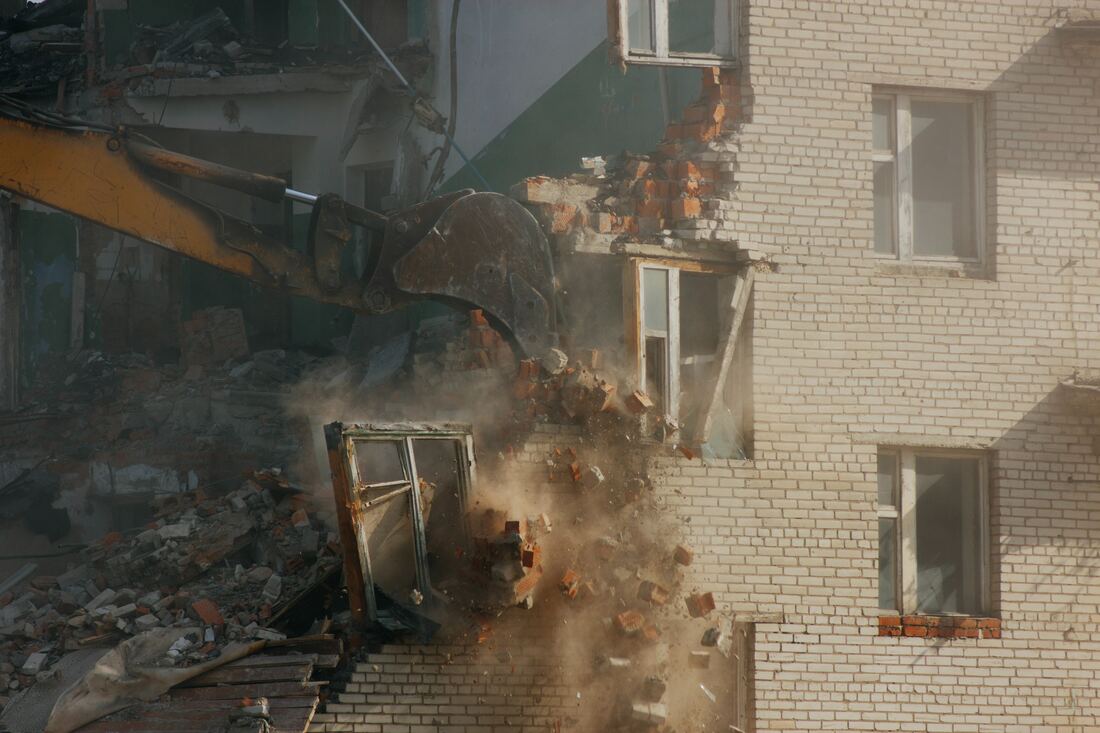|
Since I’ve had a chance to live and spend time in Japan, the United States, and Mexico, not to mention all the time spent in industrial facilities all over the world, I’ve been able to see a number of different approaches to razing buildings. I love the term “razing,” because it can encompass a whole range of different techniques.
The most elegant work I’ve seen is in Tokyo, where space constraints and very strict waste management rules means that buildings are not demolished but are dismantled piece by piece. Here is a great little video that shows some of the challenges and solutions of working in Japan. I’ve inspected many recycling facilities and building sites in Japan, and I will forever be in awe at the degree to which waste materials are separated and recycled, to avoid creating waste that must go into scarce landfill space. We could all learn a lot about recycling from Japan. There is even one technique, Daruma Otoshi, that involves removing a floor at a time, starting at the bottom of the building. This remains one of my favorite ever demolition videos, especially since I’ve spent a lot of time inside the Prince Hotel before it was closed down. And another short video that does a great job of showing Daruma Otoshi in time lapse. With our excess of space and cheap landfills in the United States, we’re not quite so careful. In fact, we’re famous for our method of imploding buildings, which has spread to other areas of the world. There are even highlight reels of annual building implosions, including this one. Of course, we still demolish most buildings with heavy equipment and a lot of time and effort. Two of the most common methods are with a wrecking ball (old school) and with a high reach excavator (newer school). Building demolition in the U.S. can create a huge amount of dust, and cleaning up afterwards is really just picking everything up and trucking it all to a landfill. That means you have to remove any hazardous building materials before any demolition starts. Hazardous building materials can include asbestos, both in insulation and in everything from wall board to floor tiles. Use of friable asbestos was phased out before 1980, but asbestos can still be found in a wide range of building materials at relatively low concentrations. Lead-based paint has a similar story. It is still used on some exterior applications and was used quite a bit on interiors before 1978. Before polychlorinated biphenyls were banned in 1979, they were used extensively as insulation in liquid filled electrical equipment ranging from transformers and capacitors to small fluorescent light fixture ballasts. PCBs were also used as a plasticizer in paint (mostly in places like ships), and caulking. All of these hazardous building materials are strictly regulated as wastes and must be separated from other kinds of demolition waste. Asbestos gets landfilled in specially designed landfills where it can be sufficiently contained. Lead debris gets stabilized by mixing with concrete so that it won’t leach into the groundwater when it is landfilled. And all PCB waste gets incinerated at facilities that are designed to destroy these persistent organic chemicals at a 99.9999% destruction and removal efficiency.
24 Comments
|
Marty WaltersEnvironmental Scientist Archives
March 2021
Categories
All
|
Proudly powered by Weebly



 RSS Feed
RSS Feed